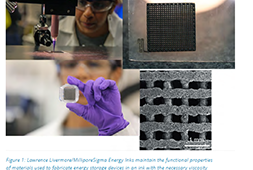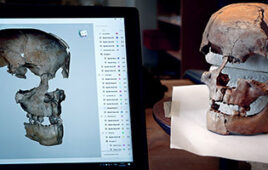
A 3D-printed, small-scaled human heart engineered from the patient’s own materials and cells. Credit: Advanced Science. © 2019 The Authors.
Using human cells, Tel Aviv University (TAU) researchers have achieved a major breakthrough by developing a biologically personalized bioink and producing the first ever-3D printed heart.
“This is the first time anyone anywhere has successfully engineered and printed an entire heart replete with cells, blood vessels, ventricles and chambers,” Tal Dvir, a professor in TAU’s School of Molecular Cell Biology and Biotechnology, Department of Materials Science and Engineering, Center for Nanoscience and Nanotechnology and Sagol Center for Regenerative Biotechnology, said in a statement.
“This heart is made from human cells and patient-specific biological materials,” he added. “In our process these materials serve as the bioinks, substances made of sugars and proteins that can be used for 3D printing of complex tissue models. People have managed to 3D-print the structure of a heart in the past, but not with cells or with blood vessels. Our results demonstrate the potential of our approach for engineering personalized tissue and organ replacement in the future.”
In the past, researchers have only demonstrated success in printing simple tissues without blood vessels. The new model is currently only about the size of a rabbit’s heart, but the researchers believe they it paves the way to someday producing a heart large enough for a human.
To achieve this feat, the researchers first biopsied fatty tissue from patients and separated the cellular and acellular materials of the tissues. The cells were then reprogrammed to become pluripotent stem cells and an extracellular matrix, 3D network of extracellular macromolecules like collagen and glycoproteins was processed into a personalized hydrogel that can serve as a bioink for the 3D printer.
After mixing the cells with the hydrogel, the cells were efficiently differentiated to cardiac or endothelial cells. This could enable doctors to develop a patient-specific, immune-compatible cardiac patch with blood vessels that is thick, vascularized and perfusable.
“The biocompatibility of engineered materials is crucial to eliminating the risk of implant rejection, which jeopardizes the success of such treatments,” Dvir said. “Ideally, the biomaterial should possess the same biochemical, mechanical and topographical properties of the patient’s own tissues. Here, we can report a simple approach to 3D-printed thick, vascularized and perfusable cardiac tissues that completely match the immunological, cellular, biochemical and anatomical properties of the patient.”
Next, the researchers are working to culture the hearts in the lab and teach them how to behave like hearts before transplanting them into animal models.
“We need to develop the printed heart further,” Dvir said. “The cells need to form a pumping ability; they can currently contract, but we need them to work together. Our hope is that we will succeed and prove our method’s efficacy and usefulness. Maybe, in 10 years, there will be organ printers in the finest hospitals around the world, and these procedures will be conducted routinely.”
Heart disease has long been the leading cause of death in the U.S., with heart transplantation viewed as the only available treatment option for patients with end-stage heart failure. However, there is currently a shortage of heart donors, and new approaches are sought to yield more acceptable heart replacements by other means.
The study was published in Advanced Science.




